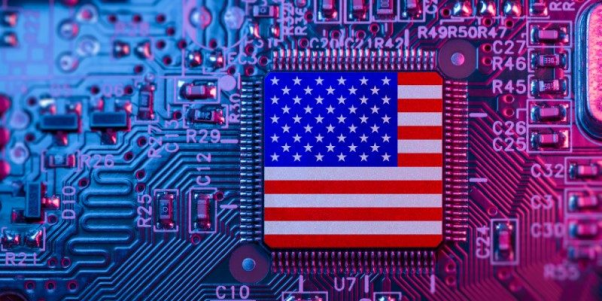The semiconductor industry, a crucial pillar of modern technology, is at the centre of rising tensions between the United States and China. With these two global superpowers battling for technological dominance, the ripple effects have been felt worldwide, especially in the stock market. This conflict has far-reaching consequences, not just for the nations involved but also for investors, businesses, and consumers globally. Understanding the origins and impact of this conflict is critical to grasping its implications on the global stage.
The Origins Of The U.S.-China Semiconductor Conflict
The roots of the U.S.-China semiconductor war go back several years, reflecting broader geopolitical tensions and competition for technological supremacy. Semiconductors, often called the "new oil" due to their importance in everything from smartphones to defence systems, have become a focal point of this rivalry. The U.S. has long been a leader in semiconductor innovation and production, while China has been heavily dependent on importing these critical components to fuel its tech industry.
China's ambition to become self-sufficient in chip production and reduce reliance on foreign suppliers has been a significant driver of this conflict. The Chinese government launched initiatives such as "Made in China 2025," aiming to dominate critical sectors, including semiconductors. This set off alarm bells in Washington, leading the U.S. to view China's technological advancements, particularly in semiconductors, as threatening national security and economic interests.

Government Policies And Trade Restrictions: The Role Of Sanctions
The U.S.-China rivalry has intensified, with both nations using government policies and trade restrictions to gain a technological edge. The U.S. has imposed sanctions on Chinese companies like Huawei, limiting their access to U.S.-made chips and software to curb China's tech and military growth.
A key U.S. move was the 2022 CHIPS and Science Act, which allocated billions to boost domestic semiconductor manufacturing and reduce dependence on foreign chips. In response, China has sought to develop its semiconductor industry but faces challenges in keeping pace with U.S. advancements. Additionally, the U.S. has lobbied allies, including Taiwan and South Korea, to limit chip sales to China, intensifying the competition.
Export Controls And Their Consequences
Export controls have become central in the U.S.-China semiconductor conflict, with the U.S. restricting technology sales to weaken China's advanced chip production, particularly in AI and 5G. In response, China imposed export limits on critical materials, escalating tensions and fragmenting the global semiconductor supply chain, impacting businesses and consumers worldwide.

Impact On The Global Semiconductor Supply Chain
The global semiconductor supply chain, already strained by the pandemic and natural disasters, has been further disrupted by U.S.-China tensions. Trade restrictions have affected Chinese firms' access to chips and U.S. companies' ability to sell semiconductors, leading to production delays, rising costs, and financial losses, particularly impacting the electronics and automotive industries.
Supply Chain Diversification
As a result, companies have begun diversifying their supply chains, seeking to reduce reliance on either U.S. or Chinese suppliers. Some firms want to shift production to other countries, such as Vietnam, India, and Mexico, to avoid the geopolitical risks associated with U.S.-China tensions. This shift creates a more fragmented global semiconductor market, with companies investing in alternative production hubs to ensure a more resilient supply chain.
Despite these efforts, the semiconductor supply chain remains vulnerable to disruptions. The complex nature of chip production, which involves hundreds of steps and multiple suppliers across different countries, makes it challenging to build a completely independent supply chain. As the U.S.-China conflict continues, businesses and consumers will likely face ongoing challenges in accessing the necessary semiconductor technology.

Stock Market Reactions: Winners And Losers In The Semiconductor Industry
The semiconductor wars have profoundly impacted the stock market, with winners and losers emerging due to the conflict. Companies involved in semiconductor manufacturing, design, and supply chains have seen their stock prices fluctuate as investors react to new developments in the U.S.-China conflict.
U.S. Semiconductor Giants
For U.S.-based semiconductor companies, the conflict has presented both opportunities and challenges. Firms like Intel, Nvidia, and Qualcomm have benefited from government support and increased demand for domestically produced chips. The CHIPS Act has injected billions of dollars into the U.S. semiconductor industry, leading to a surge in stock prices for these companies. Investors have responded positively to the potential for increased U.S. production and reduced reliance on foreign suppliers.
However, these same companies have faced headwinds from the restrictions on sales to China. China is a significant market for U.S.-made semiconductors, and losing access to this market has led to financial losses for some firms. For instance, Nvidia and Qualcomm have seen their stock prices dip following announcements of further export controls, as investors worry about the long-term impact on revenue.

Chinese Semiconductor Firms
Chinese semiconductor firms, such as SMIC (Semiconductor Manufacturing International Corporation), have also seen their stock prices affected by the conflict. SMIC, China's largest chipmaker, has been hit hard by U.S. export controls, limiting its access to advanced chip-making equipment. This has made it difficult for SMIC to compete with its U.S. counterparts in producing high-end chips.
On the other hand, China’s push for self-sufficiency in semiconductor production has led to increased government support for domestic firms. The Chinese government has poured billions of dollars into its semiconductor industry, providing subsidies and other incentives to boost production. As a result, some Chinese firms have seen their stock prices rise as investors bet on the country’s ability to overcome the challenges posed by U.S. sanctions.

Conclusion
The semiconductor wars between the U.S. and China represent more than just a technological rivalry; they are a microcosm of the broader geopolitical competition between the two nations. The impact on the semiconductor industry has been profound, with global supply chains disrupted and stock markets reacting to each new development.
As the conflict continues, companies and investors will need to navigate an increasingly complex landscape in which government policies, trade restrictions, and technological advancements shape the semiconductor industry's future. The battle for dominance in this critical sector shows no signs of slowing down.












